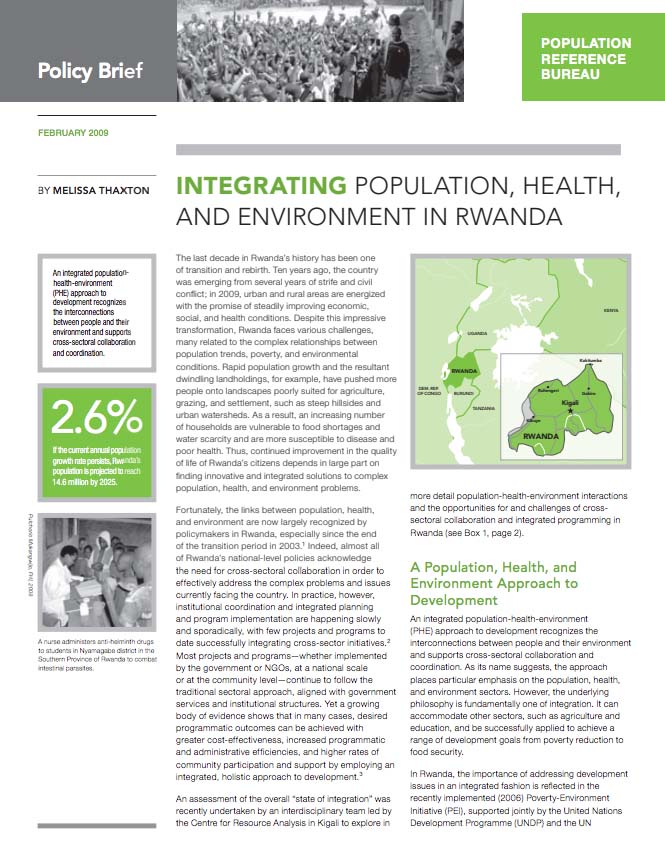
Integrating Population, Health, and Environment in Rwanda
Date
March 4, 2009
Author
(February 2009) The last decade in Rwanda’s history has been one of transition and rebirth. Ten years ago, the country was emerging from several years of strife and civil conflict; in 2009, urban and rural areas are energized with the promise of steadily improving economic, social, and health conditions. Despite this impressive transformation, Rwanda faces various challenges, many related to the complex relationships between population trends, poverty, and environmental conditions. Rapid population growth and the resultant dwindling landholdings, for example, have pushed more people onto landscapes poorly suited for agriculture, grazing, and settlement, such as steep hillsides and urban watersheds. As a result, an increasing number of households are vulnerable to food shortages and water scarcity and are more susceptible to disease and poor health. Thus, continued improvement in the quality of life of Rwanda’s citizens depends in large part on finding innovative and integrated solutions to complex population, health, and environment problems.
Fortunately, the links between population, health, and environment are now largely recognized by policymakers in Rwanda, especially since the end of the transition period in 2003. Indeed, almost all of Rwanda’s national-level policies acknowledge the need for cross-sectoral collaboration in order to effectively address the complex problems and issues currently facing the country. In practice, however, institutional coordination and integrated planning and program implementation are happening slowly and sporadically, with few projects and programs to date successfully integrating cross-sector initiatives. Most projects and programs—whether implemented by the government or NGOs, at a national scale or at the community level—continue to follow the traditional sectoral approach, aligned with government services and institutional structures. Yet a growing body of evidence shows that in many cases, desired programmatic outcomes can be achieved with greater cost-effectiveness, increased programmatic and administrative efficiencies, and higher rates of community participation and support by employing an integrated, holistic approach to development.
Melissa Thaxton is an independent consultant and former policy analyst at the Population Reference Bureau.

 ">
">